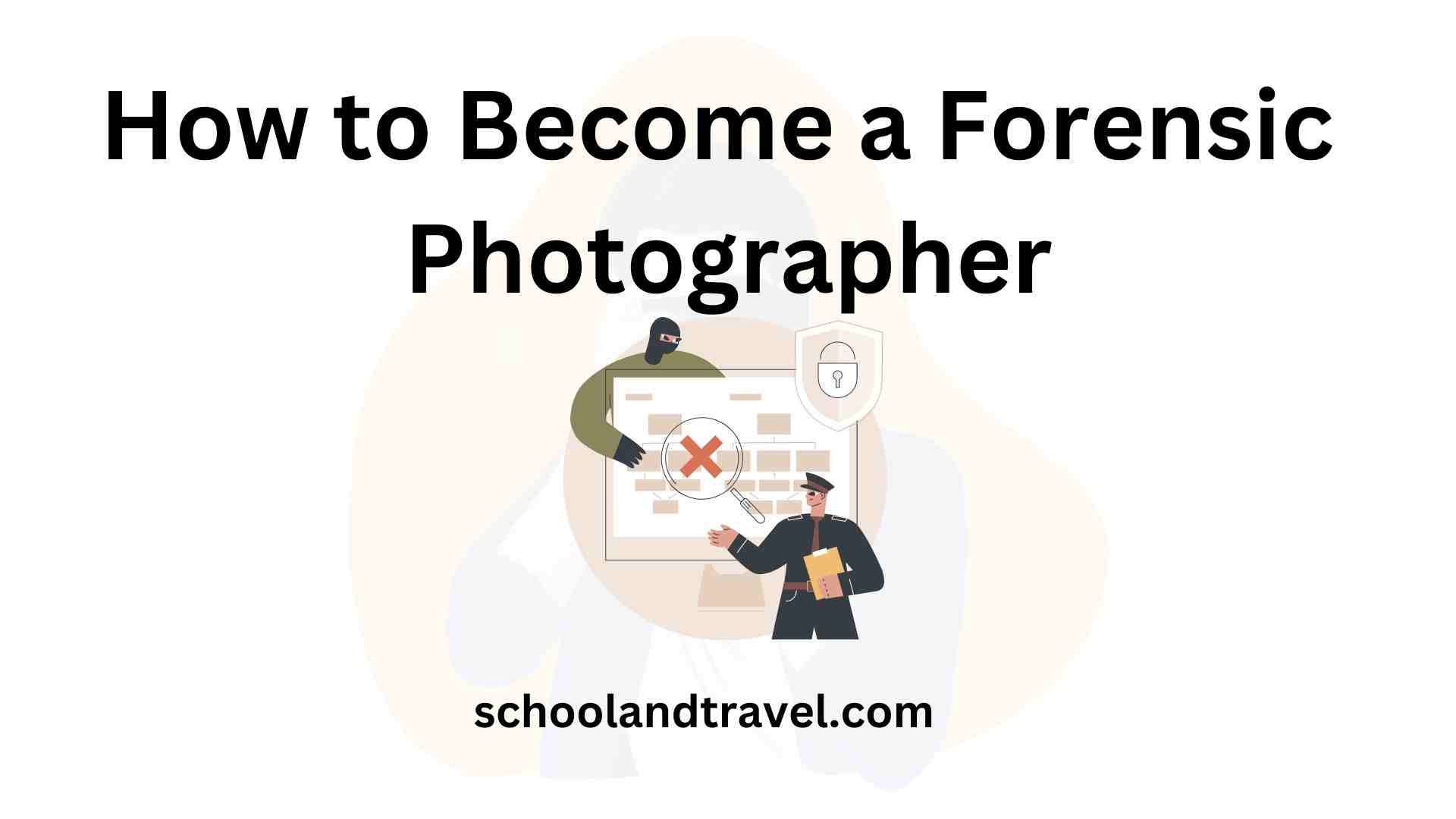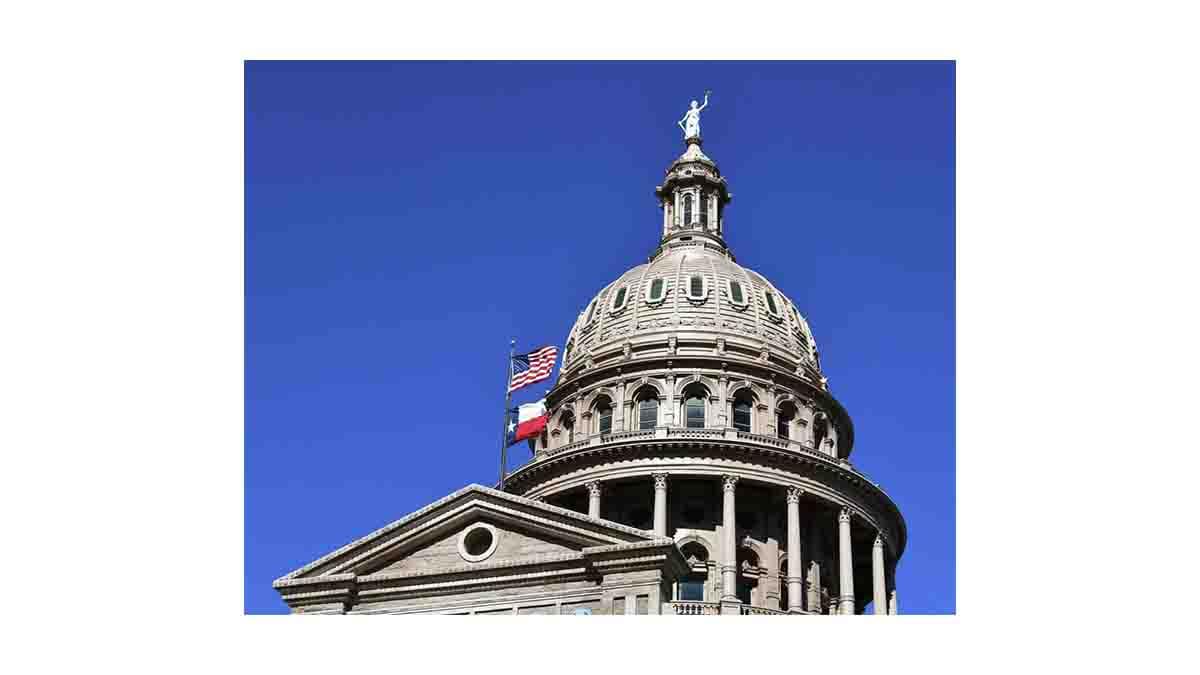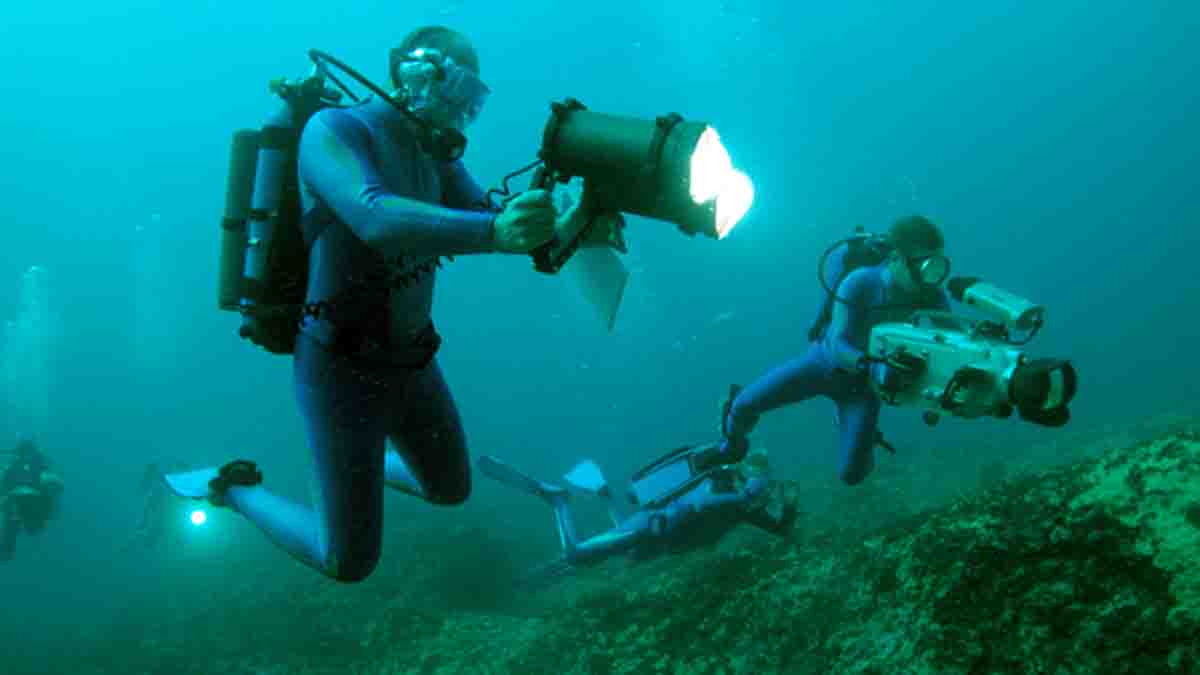Forensic photographers play an important role in gathering visual evidence to help solve crimes and bring justice to victims in this fast-paced and ever-evolving field.
They use their technical expertise and keen eye for detail to ensure nothing is missed when photographing crime scenes, injuries, and other physical evidence.
But how does one become a forensic photographer?
In this article, we will explore the necessary steps to enter this exciting profession, including the required education, training, and skills to set you on the path to success.
Who is a Forensic Photographer?
A Forensic Photographer is a specialist who specializes in taking images of crime scenes and the physical evidence found there.
These photographs must be as objective and thorough as possible to be admissible in court.
Crime scene photography is a highly technical field requiring precise lighting, lenses, and angles to create high-quality images that may be enlarged for analysis and submitted as evidence in legal procedures.
Requirements for Forensic Photographers
Photographers sent to the scene of a crime need certain skills, like as:
- Expertise in understanding how a camera works.
- A proper education in photography.
- The ability to reproduce photographs.
- Evidence gathering and forensic processing expertise.
Benefits of Forensic Photography in Crime Scene Investigation
1. Provision of visual Record:
Forensic photography is an integral part of crime scene investigation. It provides a visual record of the crime scene, ensuring no detail is missed or altered.
The photographs taken by forensic photographers serve as evidence in courtrooms, where they can help establish timelines, corroborate witness testimonies, and provide a clear understanding of the crime scene to the judge and jury.
2. Documentation:
Forensic photography is not limited to capturing images of crime scenes. It also involves documenting injuries, wounds, and physical evidence such as fingerprints, footprints, and tool marks.
These photographs help forensic experts analyze and interpret the evidence, leading to a better understanding of the crime and identifying potential suspects.
More so, forensic photographers assist in the identification process by capturing images of victims’ faces, tattoos, scars, or other distinguishing marks, allowing families to find closure and justice.
Skills Required to Become a Forensic Photographer
1. Strong Knowledge of Photography:
Firstly, a solid foundation in photography is essential. Understanding exposure, composition, and lighting techniques is crucial for capturing clear and accurate images.
Knowledge of various camera types, lenses, and accessories is important for adapting to different crime scene scenarios.
In general, great photos have five things in common: good use of light, color, an interesting moment, the right framing for the situation, and the photographer’s choice of how close to get to the subject.
2. Attention to Detail:
Paying close attention to detail means giving every aspect of a task, no matter how minor or vast, your full attention and focus.
Your performance, efficiency, and productivity in the job can all benefit from your increased attention to detail.
Attention to detail is a critical skill for forensic photographers.
They need to have a keen eye for small details and be able to capture even the most minute pieces of evidence.
This attention to detail extends to organizing and documenting photographs, ensuring they are properly labeled, dated, and stored for future reference.
3. Excellent Communication Skills:
When two or more people exchange information such as their thoughts, opinions, and ideas with one another, they are said to be communicating.
Forensic photographers should also possess excellent communication skills.
They often collaborate closely with forensic scientists, investigators, and other professionals, so clearly communicating and understanding their requirements is vital.
Sometimes, they may also need to interact with victims or witnesses, requiring empathy and sensitivity.
How to Become a Forensic Photographer
1. Obtain a high school diploma or equivalent:
A strong educational foundation (high school diploma) is essential for any career, including forensic photography.
High school photography, science, and mathematics coursework can provide a solid base for further studies.
2. Pursue a degree in forensic photography or a related field:
Many colleges and universities offer programs specifically designed for aspiring forensic photographers. These programs cover crime scene investigation, forensic science, and photography techniques.
A bachelor’s degree in forensic photography can provide a comprehensive understanding of the field and enhance job prospects.
3. Internships:
Seek internships or assistant positions with forensic photographers or law enforcement agencies to gain hands-on experience in the field.
This will help you develop your skills, build a network, and increase your chances of finding employment.
4. Develop a strong portfolio:
A portfolio is a collection of your best work that showcases your skills and abilities.
As a forensic photographer, your portfolio should include examples of crime scene documentation, evidence photography, and any other relevant work you have done.
A strong portfolio can significantly impact applying for jobs or freelance assignments.
5. Study the latest technology and techniques:
Forensic photography is constantly evolving. It is important to stay updated with the latest technology, software, and techniques used in the industry.
Attend workshops, conferences, and training sessions to enhance your knowledge and skills.
6. Apply for jobs or freelance opportunities:
Once you have gained the necessary education, training, and experience, it’s time to apply for jobs or freelance opportunities.
Look for openings in law enforcement agencies, government organizations, or private forensic consulting firms. Networking with professionals in the field can also be beneficial in finding job leads.
7. Continued professional development:
To excel in forensic photography, ongoing professional development is crucial. Stay curious, seek out new learning opportunities, and stay up to date with advancements in the field.
Continuous improvement will enhance your skills and open doors for career advancement.
Educational Requirements To Become a Forensic Photographer
Several educational options are available, ranging from certificate programs to bachelor’s degrees. Here are some options to consider:
1. Certificate programs:
Certificate programs are a good option for those with a degree in photography or a related field and want to specialize in forensic photography.
These programs typically cover the fundamentals of forensic photography, including crime scene documentation, evidence photography, and techniques for photographing injuries and physical evidence.
2. Associate degrees:
Associate degree programs in forensic photography provide a more comprehensive education, covering topics such as crime scene investigation, forensic science, and photography techniques.
These programs typically take two years to complete and can provide a solid foundation for further studies or entry-level positions in the field.
3. Bachelor’s degrees:
Bachelor’s degree programs in forensic photography or forensic science with a concentration in photography offer a broader and more in-depth education.
These programs cover a range of subjects, including crime scene investigation, forensic science, photography techniques, and legal aspects of forensic photography.
A bachelor’s degree can open up more job opportunities and provide a well-rounded education in the field.
4. Continuing Education and Workshops:
Even after completing a degree program, continuing education is important to stay updated with the latest advancements in forensic photography.
Many institutions and organizations offer workshops, seminars, and online courses that focus on specific aspects of forensic photography or cover new techniques and technologies.
These opportunities can be valuable for professional development and networking.
Equipment and Tools Used in Forensic Photography
1. Digital cameras:
Digital cameras are the primary tool used by forensic photographers.
A digital camera stores images in digital memory rather than film. Today, digital cameras have essentially phased out their film-based predecessors.
They offer high-resolution images, versatility, and the ability to review and adjust settings instantly. Full-frame or APS-C sensor cameras are commonly used for low-light performance and image quality.
2. Lenses:
A range of lenses is essential for different crime scene scenarios. Wide-angle lenses capture overall crime scene images, while macro lenses are used for close-ups of evidence and injuries.
Telephoto lenses are useful for capturing images from a distance without disturbing the crime scene.
3. Tripods and monopods:
A tripod is a portable piece of photography equipment used to steady and elevate your camera, flash, or other video or observation/measuring tools.
Tripods and monopods help stabilize the camera, ensuring sharp images and reducing camera shake. They are instrumental in low-light situations or when capturing images of small details.
4. External flash units:
External flash units provide additional light when the available light is insufficient. They help illuminate the scene and reduce shadows, resulting in clearer images.
5. Forensic light sources:
Forensic light sources emit specific wavelengths of light to reveal hidden evidence, such as fingerprints, bloodstains, or body fluids.
Different types of light sources, such as UV, infrared, or alternate light sources, are used depending on the nature of the evidence.
6. Evidence markers and scales:
Forensic photographers use evidence markers and scales to provide context and scale in photographs. These markers help identify and locate specific pieces of evidence, ensuring accurate documentation.
7. Forensic software:
Image editing and analysis software, such as Adobe Photoshop or specialized forensic software, enhance and analyze images.
These software tools can help clarify details, adjust lighting, and extract information from photographs.
Major Tips To Excel in Forensic Photography
1. Understand the photographic workflow:
A well-defined one helps ensure consistency and accuracy in documenting crime scenes.
This includes capturing overall scene images, followed by detailed images of evidence, injuries, and other relevant details.
It is important to document the scene in its original state before any evidence is moved or collected.
More so, forensic photographers should document the chain of custody of photographic evidence to maintain its integrity.
2. Understanding proper camera settings/movements:
Forensic photographers should use appropriate camera settings to capture accurate images.
This includes using manual mode to fully control exposure settings fully, setting the correct white balance, and shooting in RAW format for maximum detail and flexibility in post-processing.
3. Capture multiple angles and perspectives:
To give a full picture of the crime scene, forensic photographers should take pictures from a variety of directions. This aids in recreating the scenario and clarifies the links between objects in the scene.
4. Maintain a consistent scale:
It is important to maintain a consistent scale in forensic photography to represent the size and dimensions of evidence or injuries accurately.
This can be achieved by using evidence markers, rulers, or scales in the photographs.
5. Use proper lighting techniques:
Using the right lighting is essential for getting crisp, detailed photos.
Diffused lighting can be utilized to reduce the appearance of shadows and reflections, whereas direct flashes should be avoided on shiny surfaces.
What You Don’t Know About Forensic Photography
1. Negative impact:
Photographing crime scenes and other unpleasant occurrences can have a profound effect on forensic photographers’ mental and emotional health.
They must develop coping mechanisms and seek support to maintain their well-being.
2. Disturbing imagery:
Forensic photographers often encounter disturbing and graphic imagery, including violence, injuries, and death.
It is important to approach these situations professionally and sensitively, ensuring that victims and their families are treated with respect and dignity.
3. Too much Rules:
Forensic photographers must adhere to legal and ethical standards in their work. This includes respecting privacy rights, maintaining confidentiality, and ensuring the integrity of the evidence.
They must also avoid manipulating or altering images in any way that could compromise their accuracy or reliability.
4. Presence in court:
Many people suffer anxiety about going to court. It’s easy to imagine a stuffy, forbidding environment where legal procedures and language are the norm.
Forensic photographers may be called upon to testify in court regarding the photographs they have taken.
They must be prepared to present their work, explain the techniques used, and answer questions from lawyers and judges.
FAQs on How to Become a Forensic Photographer
The term “forensic photography” refers to the practice of photographing evidence in both civil and criminal proceedings.
Criminology is an interdisciplinary field that focuses on the scientific study and analysis of criminals, victims, and crime. It is a part of both the behavioral and social sciences. The practice of providing psychological therapy to law enforcement personnel, offenders, and victims is an example of the application of psychology to a field that is known as forensic psychology.
Crime Scenes.
Classrooms.
Morgues.
Federal, State, and Local Governments.
The number of people employed as technicians in forensic science is expected to increase by 11 percent from 2021 to 2031, which is much faster than the average growth projection for all occupations. Over the next ten years, it is anticipated that there will be, on average, approximately 2,500 new job openings in the field of forensic science technicians.
Conclusion
Forensic photographers require technical skills, education, training, and experience.
It is a challenging yet rewarding profession that plays a crucial role in crime scene investigations and the pursuit of justice.
Awesome one; I hope this article answers your question.
Editor’s Recommendations:
- What is RA Certification? How to Get it (Benefits, FAQs)
- Can Nurses Do Stitches? (Yes/No, Who Can, Training, FAQs)
- What is 19A Certification? How to Get (Steps, Renew, FAQs)
- How Long Does it Take to Get a Lifeguard Certified? (FAQs)
- 15 Easiest Medical Schools To Get Into In The UK (FAQs)
- Do Dentists Go To Medical School? (Career Path, FAQs)
- 10 Easiest Medical Schools To Get Into (Req, FAQs)
- Is GoodRx Legit or a Scam? (Yes/No, Cost, FAQs)
If you find this article good, please share it with a friend.



